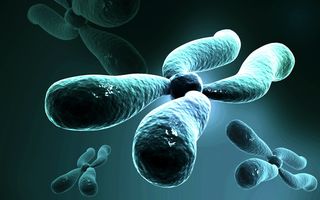Humanity Has More Mothers Than Fathers, DNA Reveals

Mothers outnumbered fathers throughout much of human history, a new DNA analysis of people around the world shows.
The genetic findings offer evidence for polygyny, when one man has many wives, and other reproductive customs, as people migrated out of Africa.
"[Historically] more of the women were reproducing than the men," study researcher Mark Stoneking, a professor of biological anthropology at the Max Planck Institute for Evolutionary Anthropology in Leipzig, Germany, told Live Science in an email. "This often happens in human societies, because not all men are able to afford wives, or sometimes a few men will have many wives."
These practices resulted in females making a larger genetic contribution to the global population than males did, the researchers found. [5 Myths About Polyamory Debunked]
Stoneking and colleagues used a new method to scrutinize genetic variation within the male Y-chromosome. By looking at one part of the Y chromosome, they found all of the genetic variants, or slight differences in the order of DNA's "letters," within that region.
Previous studies had only looked at some of the variants, leading to unreliable data, because "you only find out about genetic variants that you already know about, and not about new genetic variants," Stoneking said.
He and his colleagues put their new technique to work on DNA samples of 623 males from 51 populations around the world, including Australian, European, and American populations. The new method allowed them to take the DNA samples from each male and compare the paternally inherited Y chromosome (NRY), which gets passed down from father to son, with mitochondrial DNA (mtDNA), which mothers pass down to their children, Stoneking said.
Sign up for the Live Science daily newsletter now
Get the world’s most fascinating discoveries delivered straight to your inbox.
Women likely traveled for marriages, leaving their hometowns and moving in with their husbands, the genetic analysis showed. So, females migrated more than males did, spreading their female mitochondrial DNA far and wide and reducing genetic variability between populations. Men, in contrast, tended to stay put, which resulted in their sons having distinct genes in each population.
"We found that genetic differences between populations are indeed bigger for the [male] NRY than for [female] mtDNA, but not as big as some studies previously found, so the methods used do have an impact on the results," Stoneking said.
On a regional scale, the DNA samples showed a detailed story. For example, people in East Asia and Europe have larger genetic differences for paternal than for maternal DNA, suggesting high levels of female migration. In contrast, populations in Africa, Oceania and the Americas have bigger differences for maternal DNA than for paternal DNA.
Perhaps fewer men than women reproduced among America's early colonists, the researchers said when they saw the high amount of mitochondrial DNA diversity.
The team also estimated what proportion of men and women in the historic population reproduced. After all, some men and women do not have surviving children who can pass down their genes.
For much of human history, a greater proportion of women in the population reproduced relative to men, they found. This means "that even though there may be equal numbers of males and females in a population, a larger proportion of the females than the males are reproducing," Stoneking said.
The new, precise technique may help researchers study other facets of human population genetics and gain further insights into the history of humanity's mothers and fathers, he said.
The study was published online today (Sept. 23) in the journal Investigative Genetics.
Follow Laura Geggel on Twitter @LauraGeggel and Google+. Follow Live Science @livescience, Facebook & Google+. Original article on Live Science.

Laura is the archaeology and Life's Little Mysteries editor at Live Science. She also reports on general science, including paleontology. Her work has appeared in The New York Times, Scholastic, Popular Science and Spectrum, a site on autism research. She has won multiple awards from the Society of Professional Journalists and the Washington Newspaper Publishers Association for her reporting at a weekly newspaper near Seattle. Laura holds a bachelor's degree in English literature and psychology from Washington University in St. Louis and a master's degree in science writing from NYU.
Most Popular

